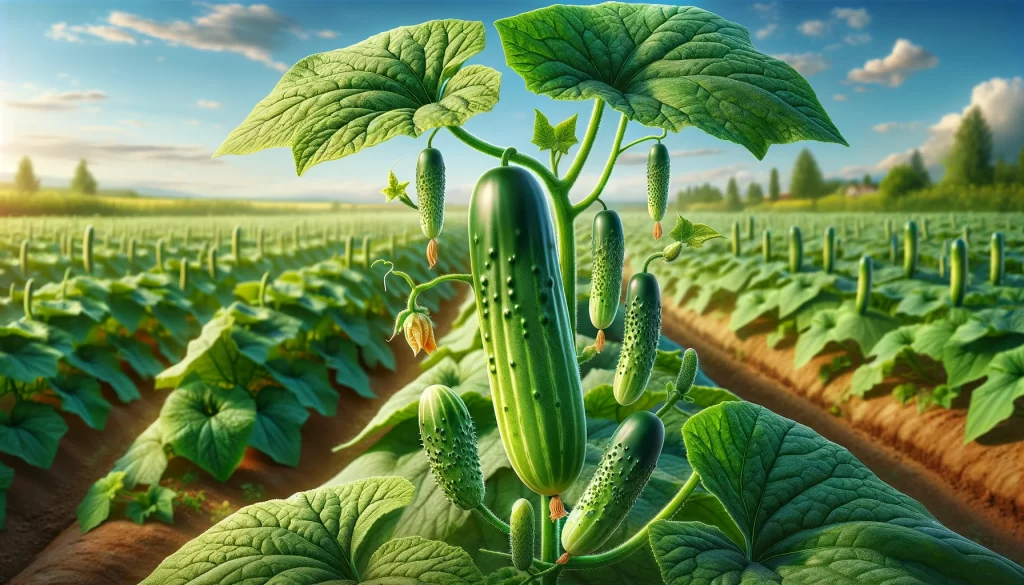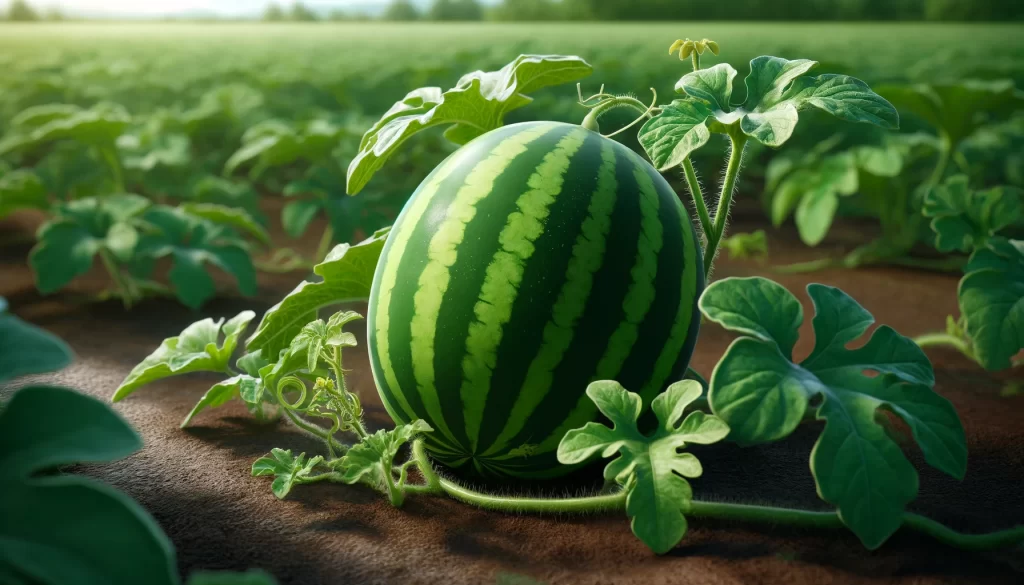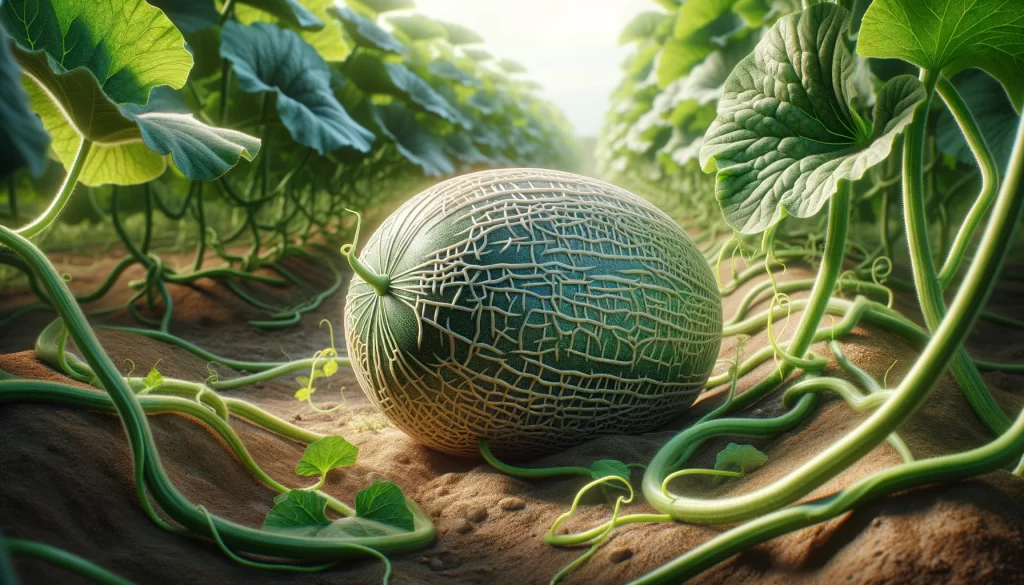Cucurbits are a family of plants that includes many important species for both agriculture and human consumption. Among the best-known crops in this family are the cucumber (Cucumis sativus), squash (Cucurbita spp.), melon (Cucumis melo), and watermelon (Citrullus lanatus).

General Characteristics
Morphology
- Leaves: Generally large and lobed, with a rough texture due to the presence of trichomes.
- Stems: They tend to be creeping or climbing, with tendrils that allow them to cling to nearby structures.
- Flowers: Unisexual, meaning that each plant has separate male and female flowers. In some cases, they can be monoecious (male and female flowers on the same plant) or dioecious (individual plants with only male or only female flowers).
Fruits
The fruits of cucurbits vary widely in shape, size, and color. Generally, they are modified berries known as pepos, which have a hard shell and many seeds inside.

Cultivation and Management
Climatic Conditions
Cucurbits prefer warm and sunny climates. They need optimal growth temperatures ranging between 20 and 30°C.
They are sensitive to frost and low temperatures, which can affect growth and fruit production.
Soil
They prefer well-drained soils, rich in organic matter and with a neutral to slightly alkaline pH (6.0-7.5).
Proper soil preparation is crucial, including deep plowing to facilitate root development and the incorporation of compost or well-decomposed manure.

Watering
They require regular watering to maintain soil moisture, especially during flowering and fruiting periods.
It is important to avoid waterlogging, which can lead to diseases such as root rot.
Pests and Diseases
Common Pests
- Aphids: They feed on the plant sap, weakening it and transmitting viral diseases.
- Whitefly: Similar to aphids, they weaken the plant and can transmit viruses.
- Cutworms: They can damage the roots and fruits in contact with the soil.
Common Diseases
- Downy Mildew: Caused by fungi, it results in yellow spots on the leaves and white down on the underside.
- Powdery Mildew: Also of fungal origin, it appears as a white powder on the leaves.
- Mosaic Virus: Causes yellow and green spots on the leaves, distorting their shape and reducing productivity.

Management Techniques
Crop Rotation
Crop rotation is essential to prevent the buildup of pests and diseases in the soil.
It is advisable not to plant cucurbits in the same place for at least 3 years.
Biological Control
Encourage the presence of natural enemies of pests, such as ladybugs and parasitic wasps.
Use traps and physical barriers to prevent insect infestation.
Cultural Practices
Maintain field hygiene by removing crop residues and diseased plants.
Apply mulching to conserve soil moisture and reduce weed growth.

Reproduction and Propagation
Seeds
Most cucurbits are propagated by seeds. Seeds should be of good quality and free from diseases.
It is advisable to pre-treat seeds with fungicides to prevent fungal diseases.
Grafting
In some cases, grafting is used to improve the resistance of plants to soil diseases. This technique is common in commercial production of watermelons and cucumbers.
Genera of Cucurbits
Cucurbits constitute a diverse family of plants with approximately 965 species distributed in about 95 genera. Below are some of the most important genera and their representative species within this family:
Important Genera and Species of Cucurbits
- Cucurbita:
- Cucumis:
- C. sativus: Cucumber.
- C. melo: Melon, including varieties like cantaloupe and winter melon.
- C. anguria: Gherkin or West Indian gherkin.
- Citrullus:
- C. lanatus: Watermelon.
- C. colocynthis: Known as colocynth.
- Lagenaria:
- L. siceraria: Bottle gourd, used both for consumption and making containers.
- Luffa:
- L. cylindrica and L. aegyptiaca: Luffa, used to make sponges.
- Momordica:
- M. charantia: Bitter melon or bitter gourd.
- Sechium:
- S. edule: Chayote or mirliton.
- Benincasa:
- B. hispida: Wax gourd or winter melon.
- Trichosanthes:
- T. cucumerina: Snake gourd.
- Bryonia:
- B. dioica and B. alba: Climbing plants with toxic roots.
- Sicyos:
- Various species known as field cucumbers.

Common Cucurbit Crops
Cucurbits are a large and diverse family of plants that include many important species for both human consumption and agriculture. Below are some of the most well-known members of this family:
- Cucumber (Cucumis sativus): Cultivated for its fruit, which is eaten raw in salads or pickled.
- Squash (Cucurbita spp.): There are several species and varieties, including:
- Winter squash (Cucurbita maxima): Varieties such as pumpkin.
- Summer squash (Cucurbita pepo): Includes zucchini and courgette.
- Butternut squash (Cucurbita moschata): Such as butternut squash.
- Melon (Cucumis melo): Includes various varieties such as cantaloupe and honeydew melon.
- Watermelon (Citrullus lanatus): Large and juicy fruit, commonly eaten in summer.
- Chayote (Sechium edule): Also known as mirliton or vegetable pear, it is cooked in various dishes.
- Bitter melon (Momordica charantia): Also known as bitter gourd or balsam pear, used in Asian cuisine and traditional medicine.
- Bottle gourd (Lagenaria siceraria): Used both for consumption and for making traditional containers and utensils.
- Cucamelon (Melothria scabra): Also known as mouse melon, it produces small fruits that look like miniature watermelons and taste like cucumber with a citrus touch.
 AgronoBlog – Agriculture Blog
AgronoBlog – Agriculture Blog